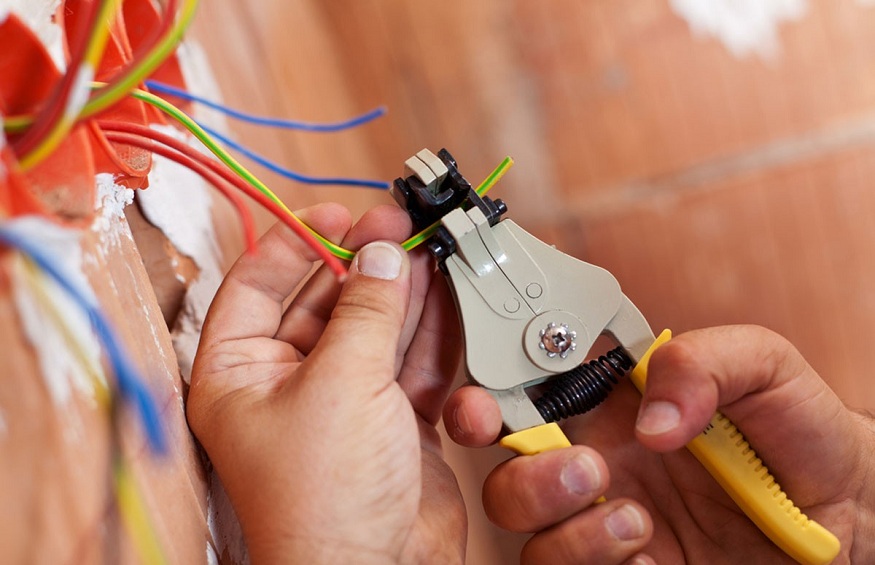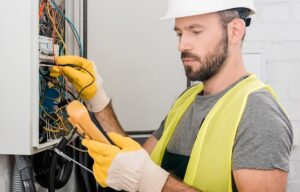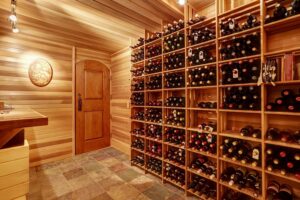Know the electrical standard for guaranteed complianc
4 min read
Having a fairly precise idea of the content of the NFC 15-100, NFC 14-100, NFC 16-600 standards is essential when electrical work is planned in your home. These terminologies can scare, but this article is precisely there to demonize these notions and in particular the NFC 15-100. Indeed, knowing this electrical standard will be crucial for you, especially if you are carrying out the electrical part of a house under construction yourself. Lighting is therefore essential.
NFC 15-100: the electrical standard to be respected for your home
What is the NFC 15-100 standard?
The NFC 15-100 standard is intended to regulate French electrical installations. In particular, it imposes a minimum number of sockets and switches with light points per room. It should also be noted that this standard is regularly updated in order to adapt to technical developments to further strengthen the safety of the electrical installation and of the inhabitants of the dwelling.
Good to know
You sometimes come across the name C 15-100, but don’t worry: these 2 terminologies have the same indications. The letters NF simply mean “French standard”.
Who is affected by the NFC 15-100 standard?
Are you carrying out renovation, construction or extension work on your home ? Have you decided not to use the services of a professional electrician? In this case, you must absolutely inquire about NFC 15-100, because knowing this electrical standard is essential to ensure the compliance of your electrical installation.
Is the NFC 15-100 standard mandatory?
If knowing the electrical standard NFC 15-100 is so important, it is because its application is a legal obligation . Its content must therefore be respected and considered from the design of your plans relating to the electricity of the dwelling. However, this regulation is not intended to constrain the owners, but to ensure the protection of their equipment (domestic appliances in particular), their comfort, as well as the safety of the inhabitants of the house or apartment.
What are the risks in the event of non-compliance with the NFC 15-100 standard?
The risk of not complying with the electrical standards in force is essentially material. An electrical installation that has not been carried out according to the standards – with for example the absence of earth – makes accidents more likely. The devices connected to the sockets can be damaged, and fires can break out with far more serious consequences for people. In addition, when putting your house up for sale, a diagnosis must be made, and non-compliance of the installation may constitute a brake on the sale.
How to find the best electrician?
NFC 15-100: implementation for the compliance of your home
Kitchen, bathroom… electrical obligations room by room
As mentioned, the NFC 15-100 standard indicates for each room what the minimum electrical equipment is:
in the bedrooms of the house, 3 sockets must be installed, as well as an RJ45 communication socket and a light point with switch;
in the living room , at least 5 sockets must be placed, or even more if the area is greater than 28 m². 1 RJ45 socket, 1 TV socket and 1 telephone socket are mandatory;
in the kitchen , 6 10/16 amp sockets are provided, to which must be added 2 20 amp circuits for dishwasher or oven type appliances, as well as a 32 amp circuit for connecting a hob or a gas cooker;
in the bathroom , stricter regulations are required for the positioning of sockets and switches due to the risks relating to water and electricity due to the proximity of the shower or sink to the electrical device. For example, a socket or a switch must be more than 60 cm from water points.
Each room must of course be the subject of lighting with its switches, and all sockets must be connected to the ground . A height above the ground must also be respected. The switches, for example, will be placed more than 90 cm in height and less than 130 cm from the ground . In addition, if a minimum of sockets is required, nothing prevents you from planning more sockets per circuit depending on the volume of each room.
The NFC 15-100 standard for the modular switchboard and the circuit breaker
You should be familiar with the electrical standard before buying your electrical panel, because the regulations provide for reserving space for future equipment. Do you live in collective housing ? In this case, at least 6 modules must remain free . In a house , it will be necessary to reserve 20% of the pitches . Thus, a new circuit breaker and a differential can be added over the years. Let us add that with this standard, each set of fuses must leave room for an individual circuit breaker for better protection of the circuits. Finally, depending on the region, an electrical installation that meets standards must be fitted with surge arresters. A salesman of electrical equipment or a professional electrician can inform you about the need to equip yourself with it in your place of residence.
The NFC 15-100 standard, the ETEL and the GTL
The NFC 15-100 standard also requires that an ETEL (electrical technical space in the dwelling) be installed with all the circuit breakers. Note that this volume must remain dedicated to the GTL (housing technical shaft). The ETEL in fact completes the GTL, because the latter lacked precision on certain aspects.
At the end of the work, certification by the Consuel
When the construction work on your house is finished, you must obtain a certificate of conformity in order to be able to use your electrical installation. A request must then be made to the Consuel, the National Committee for the Safety of Electricity Users





